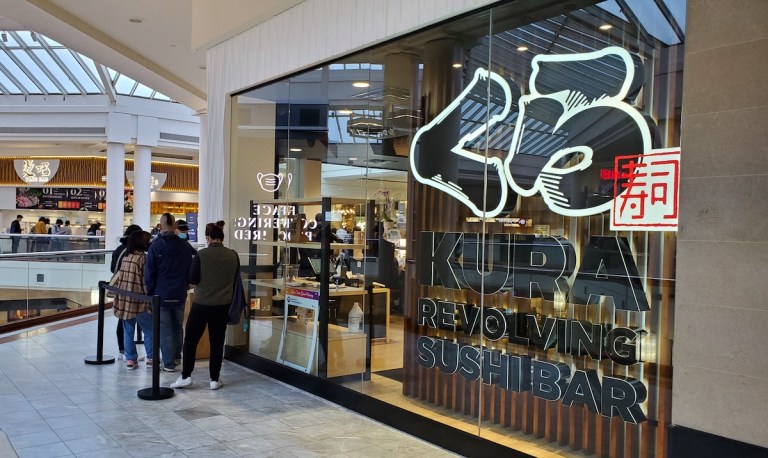Restaurant Customers Want Self-Service, but Only If It’s Fun

While some restaurant technologies, such as QR code menus, may rub most consumers the wrong way, it seems that diners are open to self-service when it allows them to have more fun.
Take, for instance, Kura Sushi, a conveyor-belt-style sushi chain that originated in Japan and now has 56 U.S. locations. The brand’s United States arm shared in its first-quarter fiscal 2024 earnings results, reported Thursday (Jan. 4), that comparable sales are up 4% year over year and that the chain’s 12 new restaurants opened in the last year are performing well, as consumers enjoy the novel dining experience.
“We’ve opened a couple of restaurants in New York. We hit Pittsburgh. We’re in Tampa,” Kura Sushi USA President and CEO Hajime Jimmy Uba told analysts on a call. “It’s been a pleasure really to see how warm the receptors [are] in each of these markets. And every time we enter a new market, it’s just a confirmation of the portability of our concept, and so it’s really encouraging for us.”
The brand is finding new ways to integrate self-service throughout the experience as well, beyond just collecting the sushi from the belt. For instance, Chief Financial Officer Jeff Utz noted that the brand is testing mobile order-to-table capabilities at two locations with plans to expand it down the line.
Overall, consumers have their doubts about self-service restaurant technologies. PYMNTS Intelligence’s study “Digital Divide: Technology, Customer Service and Innovation in the Restaurant Industry,” which drew from a survey of nearly 2,400 U.S. consumers, found that 34% feel positive about viewing menus via a QR code, and 31% want to order from self-service kiosks. Conversely, 76% felt positive about being served by the same wait staff.
Plus, the study “The Digital Divide: Technology, the Metaverse and the Future of Dining Out,” which drew from a PYMNTS Intelligence survey of nearly 2,500 U.S. consumers, found that 39% of consumers believe that restaurants are becoming less personal.
Additionally, another PYMNTS Intelligence survey of more than 2,200 U.S. consumers revealed that 37% agreed that more technology inside restaurants means better customer service.
Yet, it seems that when the experience is fun, consumers change their tune.
In an interview with PYMNTS last year, Geoff Henry, then president of Jamba, noted that the restaurant’s partnership with autonomous robotic food service kiosk creator Blendid to create automated smoothie shops had been receiving positive responses from those who tried it. Performance was particularly strong among younger consumers who are more open to testing new technologies.
“The repeat rate has been very high,” Henry said. “We’re obviously tracking those who purchase and then come back and purchase again [and] benchmarking that relative to what we would expect versus industry standards, and we’ve been pleased.”
Additionally, in a September interview with PYMNTS, GoTab CEO Tim McLaughlin said he expects self-service technology to continue to grow in the restaurant industry, taking over the parts of the dining process that have typically relied on the labor of servers without adding much to consumers’ experience.
“I think self-service will eliminate all of the un-fun parts of the [restaurant] experience,” he said. “So, checking in, … reordering. Ordering the first time is oftentimes fun. Reordering is not terribly fun. … Each of these different modes of interaction has its strengths and weaknesses, and I would say overall, anything that is transactional and not experiential will be moved to self-service.”